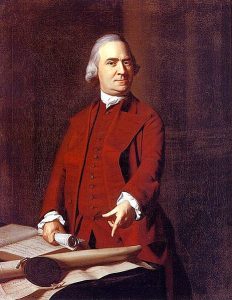The theme for today’s lecture was about online privacy and was entitled Surveillance, Sousveillance & Autoveillance.
The lecture had to open up with a minor discussion on the concept of privacy and the problem of finding a definition that many can agree upon. Privacy is a strange mix of natural human need and social construct. The former is not easily identifiable and the latter varies between different cultures.
It is not enough to state that privacy may have a natural component – sure, put too many rats in a cage and they start to kill each other – you also need the technology to enable our affinity for privacy to develop.
For example in At Home: A Short History of Private Life, Bill Bryson writes that the hallway was absolutely essential for private life. Without the hallway people could not pass by other rooms to get to the room you need to go to – but they would have to pass through the other rooms. Our ideas of privacy were able to develop after the “invention” of the hallway.
In order to settle on a definition I picked one off Wikipedia …(from Latin: privatus “separated from the rest, deprived of something, esp. office, participation in the government”, from privo “to deprive”) is the ability of an individual or group to seclude themselves or information about themselves and thereby reveal themselves selectively.
And to fix the academic discussion I quoted from Warren and Brandeis The Right to Privacy, 4 Harvard Law Review 193 (1890)
The intensity and complexity of life, attendant upon advancing civilization, have rendered necessary some retreat from the world…solitude and privacy have become more essential to the individual; but modern enterprise and invention have, through invasions upon his privacy, subjected him to mental pain and distress…
I like this quote because it also points to the effects of modern inventions on the loss of privacy.
In closing the lecture introduction I pointed out that privacy intervention consists of both data collection and data analysis – even though most of the history of privacy focused on the data collection side of the equation. In addition to this I broke down the data collection issue by pointing out that integrity consists of both information privacy (the stuff that resides in archives) and spatial privacy (for example surveillance cameras & the “right” to be groped at airports).
For the next section the lecture did a quick review of the role of technology in the privacy discussion. Without technology the ability to conduct surveillance is extremely limited. The early origins of tax records and collections like the Domesday book were fundamental for controlling society. However, real surveillance did not really begin until the development of technology such as the wonderful Kodak nr 1 in 1888. The advantages of this technology was that it provided a cheap, easy to use, portable ability to take photographs. Photographs could be snapped without the object standing still. A whole new set of problems was instantly born. One such problem was kodakers (amateur photographers, see “’Kodakers Lying in Wait’: Amateur Photography and the Right to Privacy in New York, 1885-1915”, American Quarterly, Vol 43, No 1 March 1991) who were able to suddenly able to take photographs at of unsuspecting victims.
Surveillance: A gaze from above
The tradition concerns of surveillance deal with the abuse of state (or corporate) power. The state legitimizes its own ability to collect information about its citizens. The theoretical concerns with surveillance are the abuse from the Big Brother state and foremost in this area is the work of Foucault and his development of the Panopticon (all-seeing eye prison). Foucault meant that in a surveillance society the surveilled, not knowing if anyone was looking, would internalize his own control.
Sousveillance: A gaze from below
The concept of sousveillance was originally developed within computer science and “…refers to the recording of an activity by a participant in the activity typically by way of small wearable or portable personal technologies…” Wikipedia
But in the context of privacy the idea was that our friends and peers (especially tricky concepts in Social Media) will be the ones who collect and spread information about us online.
We are dependent upon our social circle, as Granovetter states: “Weak ties provide people with access to information and resources beyond those available in their own social circle; but strong ties have greater motivation to be of assistance and are typically more easily available.” (Granovetter, M.S. (1983). “The Strength of the Weak Tie: Revisited”, Sociological Theory, Vol. 1, 201-33., pp 209).
This ability of others to “out” us in social media will become more interesting with the development of facial recognition applications. These have already begun to challenge social and legal norms (Facebook facial recognition software violates privacy laws, says Germany – The Guardian 3 August 2011).
Autoveillance: a gaze from within
The final level is Autoveillance – this is obviously not the fact that we are looking at ourselves but attempts to address the problems of our newfound joy in spreading personal information about ourselves.
Is this a form of exhibitionism that enables us to happily spread personal, and sometimes intimate, information about ourselves? Is this the modern version of narcissism?
Narcissism is a term with a wide range of meanings, depending on whether it is used to describe a central concept of psychoanalytic theory, a mental illness, a social or cultural problem, or simply a personality trait. Except in the sense of primary narcissism or healthy self-love, “narcissism” usually is used to describe some kind of problem in a person or group’s relationships with self and others. (Wikipedia)
We have always “leaked” information but most of the time we have applied different strategies of control. One such strategy is compartmentalization – which is the attempt to deliver different information to different groups. For example my mother, my wife, my co-workers, my friends and my children do not need to know the same stuff about me. But social media technology defies the strategy of compartmentalization.
At the same time as this is happening our social and legal norms have remained firm in the analog age and focus on the gaze from without.
Then the lecture moved from data collection to data analysis. Today this is enabled by the fact that all users have sold away their rights via their End-User License Agreements (EULA). The EULA is based upon the illusion of contracts as agreements between equals. However, as most people do not read the license, or if they read the license they don’t understand it, or if they understand it the license is apt to change without notice.
Today we have a mix of sur, sous & autoveillance. And again: regulation mainly focuses on surveillance. This is leading to an idea about the end of privacy. Maybe privacy is a thing of the past? Privacy has not always been important and it may once again fall into disrepute.
With the end of privacy – everyone may know everything about everyone else. We may have arrived at a type of Hive Mind. The hive mind is a concept from science fiction (for example Werewolves in Twilight, The Borg in Star Trek and the agents in The Matrix). An interesting addition to this line of thinking is the recent work by the Swedish philosopher Torbjörn Tännsjö who argues that it is information inequality that is the problem.
The problem with Tännsjö’s arguments is that he is a safe person living in a tolerant society. He seems to really believe the adage: If you have done nothing wrong, you have nothing to fear. I seriously doubt that the stalked, cyberbullied, the disenfranchised etc will be happier with information equality – I think that they would prefer the ability to hide their weaknesses and to chose when and where this information will be disclosed.
The problem is that while we had a (theoretical) form of control over Big Brother we have no such control over corporations to whom we are less than customers:
If you are not paying for it, you’re not the customer; you’re the product being sold.
The lecture closed with reminders from Eli Pariser’s The Filter Bubble that with the personalization of information we will lose our identities and end up with a diet of informational junk food (the stuff we maybe want but should not eat to much of).
Then a final word of warning from Evgeny Morozov (The Net Delusion) to remind the audience that there is nothing inherently democratic about technology – our freedom and democracy will not be created, supported or spread just because we have iPods…


 (1750) which portrayed the wealthy couple showing off their wealth. It reminds me of the boastful elements of social media. The next portrait was John Singleton Copley’s
(1750) which portrayed the wealthy couple showing off their wealth. It reminds me of the boastful elements of social media. The next portrait was John Singleton Copley’s 

 Napoleon’s marshals who became king Charles XIV John of Sweden. During Oscar’s time as crown prince and heir to the Swedish throne he was very socially active. Among other things he wrote a series of articles on popular education, and (in 1841) an anonymous work, “Om Straff och straffanstalter”, advocating prison reforms. The latter was translated in many languages and in English was given the title On Punishments and Prisons.
Napoleon’s marshals who became king Charles XIV John of Sweden. During Oscar’s time as crown prince and heir to the Swedish throne he was very socially active. Among other things he wrote a series of articles on popular education, and (in 1841) an anonymous work, “Om Straff och straffanstalter”, advocating prison reforms. The latter was translated in many languages and in English was given the title On Punishments and Prisons.